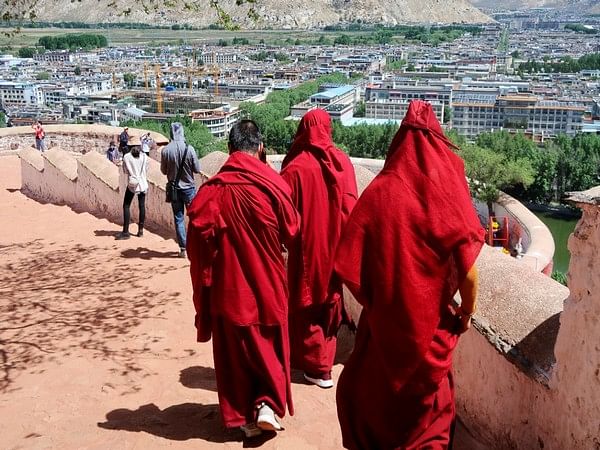Dharamshala (Himachal Pradesh) [India], December 28 (ANI): Larung Gar Buddhist Academy, recognised as the world’s largest Tibetan Buddhist study center, has witnessed a sharp rise in Chinese military presence, signifying intensified surveillance and stricter regulations on religious practices, the Central Tibetan Administration (CTA) reported.
CTA reported on December 20, 2024, that approximately 400 Chinese military personnel had been deployed to the academy in Serthar County, Karze (Chinese: Ganzi), located in the Tibetan Kham region, now part of Sichuan Province. The deployment was accompanied by helicopter surveillance, indicating increased monitoring of the significant religious site.
Sources reveal that Chinese authorities plan to enforce new regulations at Larung Gar in 2025. These include limiting residency to a maximum of 15 years and implementing mandatory registration for all monks and nuns. Furthermore, the government aims to reduce the number of religious practitioners at the academy, with reports stating that Chinese students are being directed to leave the institution.
Established in 1980, Larung Gar has been a pivotal center for Tibetan Buddhist education, attracting thousands of monks and nuns. However, the academy has frequently been targeted by Chinese authorities. Major crackdowns occurred in 2001 and again between 2016 and 2017, during which thousands of residential structures were demolished, and practitioners were forcibly evicted. These actions halved the population at Larung Gar, reducing it from approximately 10,000 to its current levels, reported CTA.
The recent military buildup and impending regulations highlight an escalation in Beijing’s campaign to limit religious freedom in Tibet. The measures align with a broader strategy to exert control over Buddhist institutions, as traditional practices and teachings face increased state interference.
The Tibet issue remains a long-standing point of contention. Tibet, historically an independent region, was entered by the Chinese People’s Liberation Army in 1950. In 1951, China asserted sovereignty over Tibet, leading to political unrest. A major uprising in 1959 resulted in the Dalai Lama fleeing to India, where he established the Tibetan government-in-exile, CTA reported.
While China regards Tibet as an inseparable part of its territory, many Tibetans continue to seek greater autonomy or independence. The ongoing dispute centers on human rights, particularly the restriction of religious freedom and the preservation of Tibetan culture. (ANI)
This report is auto-generated from ANI news service. ThePrint holds no responsibility for its content.






